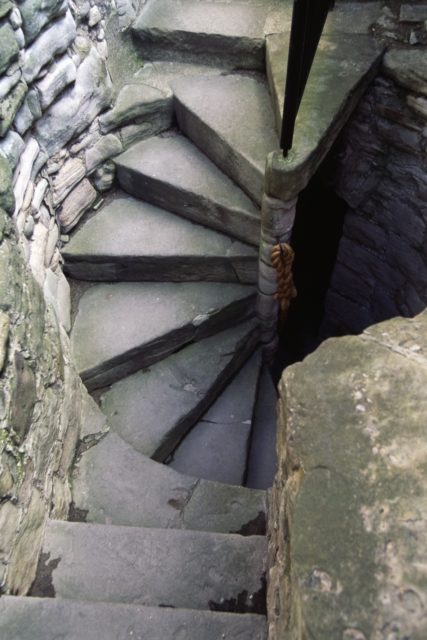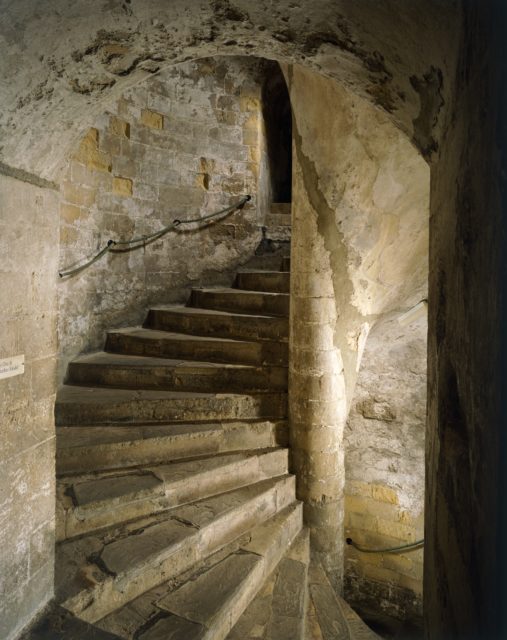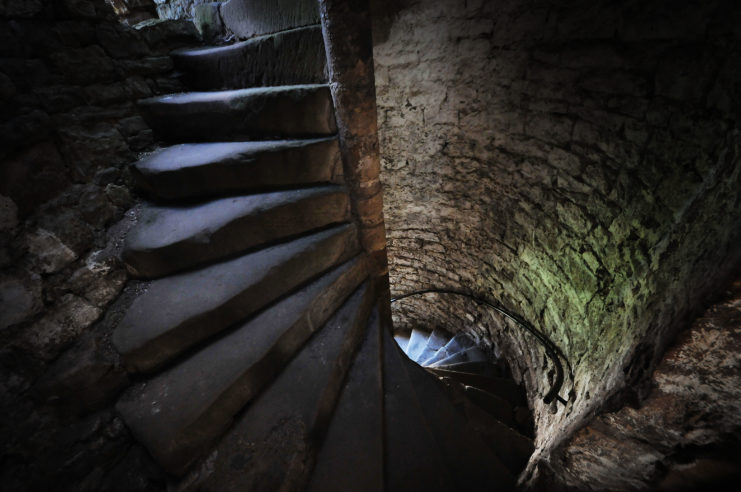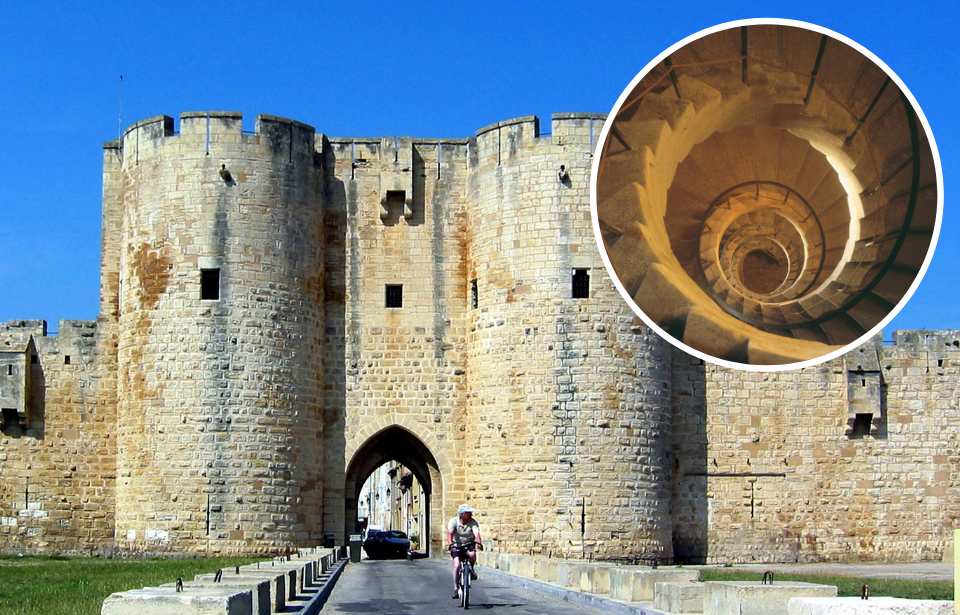Castles were a common architectural structure throughout the medieval period, and they were constantly under attack. Just looking at them, one could describe these fortifications as incredible works of art from a time long before, but what we often don’t see is the incredible engineering within. One of the more unsuspecting feats of medieval castle defense comes in the form of their infamous spiral staircases.
Their clockwise rotation was incredibly beneficial

Most medieval castles were adorned with towers that featured spiral staircases. While they may not have been added to every single castle, the majority of those that did include these towers featured staircases that ascended in a clockwise direction – and this was not done by chance.
A clockwise spiraling staircase was used to inhibit an attacker’s ability to launch an effective assault. A clockwise spiral put them at a huge disadvantage, as most sword-wielders were right-handed. Anyone trying to ascend a tower and attack would struggle for a number of reasons.
The design of the tower was intended to make it difficult for an attacker to draw their sword. Once they did, the inner wall of the spiral would prevent them from being able to fully swing their weapon. Additionally, they’d have to round the curve before being able to strike, so were forced to put themselves in a vulnerable position.
Medieval staircases gave defenders the advantage

While the clockwise spiral of medieval staircases disadvantaged those launching assaults, it greatly aided a castle’s defenders. As they descended, the design favored their right-handedness. Not only could they easily draw their sword, but their swing matched the curvature of the tower’s outer wall. As such, defenders were able to launch full, powerful blows at an attacker without having to worry about striking any walls.
The inner wall also served as a benefit to defenders. Following it closely allowed them to partially shield themselves. As aforementioned, the person launching the assault would have to expose themselves by moving closer to the outer wall, while the defender could maintain a slightly-shielded position and still engage in the fight.
The stairs themselves served a purpose

In combination with the clockwise spiral of the staircases, the stairs in these medieval towers also served as a means to disadvantage attackers. During the medieval period, individual stairs weren’t built to the same specifications. Each was constructed separately and with different dimensions, resulting in serious irregularities in the overall staircase.
For the defender, this wasn’t an issue, as they were likely familiar with the irregularities after having walked the steps countless times. The attackers weren’t so lucky. The differences would cause them to stumble or lose their balance as they made their ascent.
More from us: Winged Hussars: The Rise and Fall of Europe’s ‘Angels of Death’
In the poorly lit and clockwise spiraled staircases designed to solely benefit those tasked with defending the medieval period’s many castles, attackers probably regretted having ever entered the fortifications in the first place.
